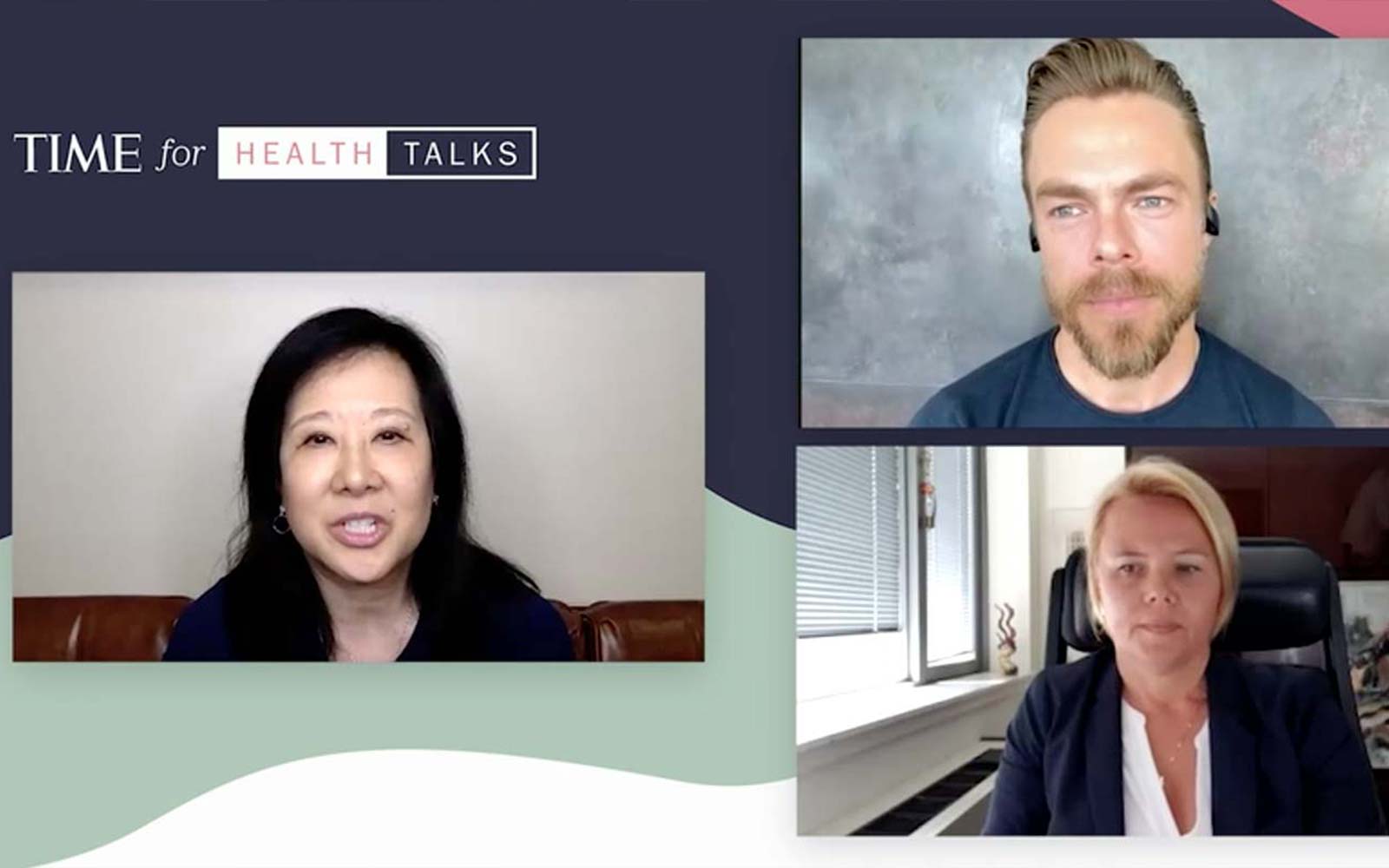I’ve written previous posts on various studies that show the value of dancing to improve the mind in different ways. This morning one of my students shared a Time Magazine health talks article that I thought would be of great interest to the Delta Dance community. It includes a terrific remote video interview with Helena Blumen, assistant professor in the department of medicine at Albert Einstein Medical College, and professional dancer Derek Hough.
None of this stuff will surprise anyone who dances, but I was impressed by the clarity of the information and the depth in which Derek describes the cognitive process advanced dancers go through.
Blumen is studying dance as a form of mental therapy for older adults. She describes a study in which she compared people assigned to walk on a treadmill to those in a social dance class for six months. People who danced showed more encouraging improvements in tests of their cognitive functions than those walking on the treadmill. Blumen says the social nature of dancing, such as working with a partner, along with the intellectual skills required to learn steps and think about connecting different movements—could be contributing to these benefits.
More studies are on the way, and Blumen is looking foward to finding if the results she has seen to date carry over to video-based communication.
Hough is asked about the difference between activities like walking or running and dance. He points out that typical physical activities allow you to “zone out” while you’re exercising. So, even though you’re benefiting from the physical movement, your brain isn’t actively engaged. In contrast, while dancing, you are constantly working to solve problems and create new patterns in your movement. Things as subtle as being aware of balance are active processes that involve the mind in a continual, engaging way every moment that you are dancing.
During the interview, Derek is asked to describe what goes on in the mind of an advanced dancer while performing. He mentions the awareness of music and being able to highlight different aspects of the music in real time, finding nuances and instruments that others might not even notice and calling attention to them through body movement.
While dancing, you are constantly working to solve problems and create new patterns in your movement.
I loved the clarity of these insights. When dancing with a partner, we are responding to the music in real time. Our movements are constantly aware of things like the notes and rhythm of the music, the balance of our partners and ourselves, the angles and lines our bodies are creating through our actions, and the story we are communicating.
As Derek points out, a beginner dancer may only be hearing the basic rhythm of a song, but as we get more advanced, our depth of creative response becomes more sophisticated. It’s not unlike what might happen in any other artistic field. Someone who is new to playing a musical instrument, or to drawing and painting, or even to a sporting activity like riding a bicycle, will initially be focused on basic aspects of that skill. Once they become more adept, the mind can begin to explore deeper levels within that discipline. With dance, we also have the benefit of music and physical movement to further assist the neurons in building new pathways and mental acuity.
Spend a few minutes watching the interview. It’s quite enjoyable.














